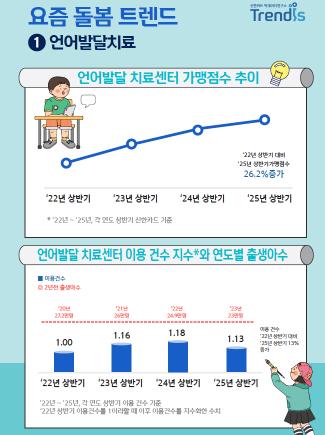Identify individual progression of knee osteoarthritis patients...Provide customized treatment directions for each type
Sep 08, 2025
A research team led by Professor Lee Yong-seok of orthopedics at Bundang Seoul National University Hospital (first author: Park Sung-yoon, Kim Myung-joo, corresponding author: Lee Yong-seok) is drawing attention by identifying the progress of knee osteoarthritis patients according to their individual characteristics and presenting changes in the treatment paradigm accordingly. This study is expected to be an important foothold for a customized treatment approach for knee osteoarthritis.
Until now, knee osteoarthritis has been understood as a disease caused by aging and wear of knee cartilage. Recently, however, it has been found to be a disease caused by multiple mechanisms such as inflammation and changes in bone strength. This means that not only structural factors of the knee, such as abnormal lower limb alignment (O leg), loss of cartilage, reduced joint spacing, and the formation of osteoporosis caused by abnormal bone proliferation around the joint, but also the basic conditions of patients such as age, bone density, and metabolic disease affect osteoarthritis.
Because these various factors work together, the timing, site, and progression of osteoarthritis appear differently for each patient. Accordingly, it has been pointed out that there is a limit to the existing approach to applying the same method of treatment to all patients.
Professor Lee Yong-seok's research team analyzed 833 knee X-ray images and clinical data from about 79,000 patients who visited the hospital with knee pain from 2003 to 2017 that can be followed up for more than five years and confirm the progression pattern of osteoarthritis. The research team tried to classify major phenotypes using artificial intelligence (AI) machine learning techniques and to find out the characteristics of patients that influence the progression of each phenotype.
The research team largely divided knee osteoarthritis into single-compartment osteoarthritis (mainly occurring in one area inside) and three-compartment osteoarthritis (occurring throughout the knee). In addition, osteoarthritis of the three compartments was analyzed by subdividing it into a form in which the joint gap narrows ▲ the formation of the osteoporosis was prominent.
As a result of the study, the progression pattern of knee osteoarthritis was closely related to the individual characteristics of the patient. In particular, patients with low bone density developed osteoarthritis throughout the knee due to weak bone support, and mainly progressed in the form of narrowing the joint gap. Conversely, patients with high bone density often developed arthritis in a specific area as their load was concentrated in a specific area, and in this process, leg-shaped deformation was often accompanied.
In addition, even young patients with metabolic diseases such as high blood pressure and diabetes reduce the supply of blood flow to the joints and promote inflammatory reactions, leading to a lot of osteoporosis throughout the knee.
The AI prediction model reflecting these patient-specific characteristics showed high accuracy in predicting knee osteoarthritis progression, recording a maximum AUC of 0.94. AUC (area under the curve) is an indicator of predictive performance, and the closer to 1, the better. This model outperforms the existing simple statistical method (AUC 0.87), demonstrating that patient-specific progression can be more precisely distinguished.
Furthermore, the research team used Shapley Additive Explanations (SHAP) to quantify and visually present how each patient's characteristics affect the progression of osteoarthritis. Through this, it is expected that the risk factors for each patient can be more clearly identified, thereby increasing the possibility of clinical use of the predictive model.
Professor Lee Yong-seok said "This study will be an important basis for early identification of the progression pattern of osteoarthritis and establishing customized management strategies for each patient based on the radiation and clinical information of patients that can be easily obtained during outpatient treatment.".
He then emphasized that "For patients with low bone density, osteoporosis treatment should be considered more actively, although osteoarthritis, patients with high bone density focus on treatment of lower limb alignment and cartilage, and patients with metabolic diseases will be able to have differentiated treatment approaches, such as focusing on treatment of metabolic diseases and management of inflammation.'
On the other hand, the findings of this study were published in Nature Portfolio Journal's 'npj Digital Medicine (IF: 15.1)', the top 1% international academic journal in the field of Health Care Sciences & Services based on JCR, and were selected as a paper by the Biological Research Information Center (BRIC) 'People Who Shined Korea'.
Until now, knee osteoarthritis has been understood as a disease caused by aging and wear of knee cartilage. Recently, however, it has been found to be a disease caused by multiple mechanisms such as inflammation and changes in bone strength. This means that not only structural factors of the knee, such as abnormal lower limb alignment (O leg), loss of cartilage, reduced joint spacing, and the formation of osteoporosis caused by abnormal bone proliferation around the joint, but also the basic conditions of patients such as age, bone density, and metabolic disease affect osteoarthritis.
Because these various factors work together, the timing, site, and progression of osteoarthritis appear differently for each patient. Accordingly, it has been pointed out that there is a limit to the existing approach to applying the same method of treatment to all patients.
Professor Lee Yong-seok's research team analyzed 833 knee X-ray images and clinical data from about 79,000 patients who visited the hospital with knee pain from 2003 to 2017 that can be followed up for more than five years and confirm the progression pattern of osteoarthritis. The research team tried to classify major phenotypes using artificial intelligence (AI) machine learning techniques and to find out the characteristics of patients that influence the progression of each phenotype.
The research team largely divided knee osteoarthritis into single-compartment osteoarthritis (mainly occurring in one area inside) and three-compartment osteoarthritis (occurring throughout the knee). In addition, osteoarthritis of the three compartments was analyzed by subdividing it into a form in which the joint gap narrows ▲ the formation of the osteoporosis was prominent.
As a result of the study, the progression pattern of knee osteoarthritis was closely related to the individual characteristics of the patient. In particular, patients with low bone density developed osteoarthritis throughout the knee due to weak bone support, and mainly progressed in the form of narrowing the joint gap. Conversely, patients with high bone density often developed arthritis in a specific area as their load was concentrated in a specific area, and in this process, leg-shaped deformation was often accompanied.
In addition, even young patients with metabolic diseases such as high blood pressure and diabetes reduce the supply of blood flow to the joints and promote inflammatory reactions, leading to a lot of osteoporosis throughout the knee.
The AI prediction model reflecting these patient-specific characteristics showed high accuracy in predicting knee osteoarthritis progression, recording a maximum AUC of 0.94. AUC (area under the curve) is an indicator of predictive performance, and the closer to 1, the better. This model outperforms the existing simple statistical method (AUC 0.87), demonstrating that patient-specific progression can be more precisely distinguished.
Furthermore, the research team used Shapley Additive Explanations (SHAP) to quantify and visually present how each patient's characteristics affect the progression of osteoarthritis. Through this, it is expected that the risk factors for each patient can be more clearly identified, thereby increasing the possibility of clinical use of the predictive model.
Professor Lee Yong-seok said "This study will be an important basis for early identification of the progression pattern of osteoarthritis and establishing customized management strategies for each patient based on the radiation and clinical information of patients that can be easily obtained during outpatient treatment.".
He then emphasized that "For patients with low bone density, osteoporosis treatment should be considered more actively, although osteoarthritis, patients with high bone density focus on treatment of lower limb alignment and cartilage, and patients with metabolic diseases will be able to have differentiated treatment approaches, such as focusing on treatment of metabolic diseases and management of inflammation.'
On the other hand, the findings of this study were published in Nature Portfolio Journal's 'npj Digital Medicine (IF: 15.1)', the top 1% international academic journal in the field of Health Care Sciences & Services based on JCR, and were selected as a paper by the Biological Research Information Center (BRIC) 'People Who Shined Korea'.
|
This article was translated by Naver AI translator.














